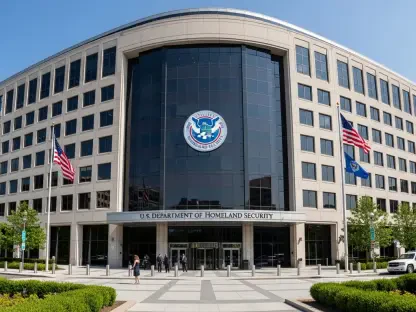The complexities and potential implications of former President Trump’s plans to reduce the federal workforce through a series of policy shifts have sparked significant concern and confusion among federal employees. The changes proposed by the administration are not just about cutting costs but also involve reshaping employment stability and the functionality of various governmental processes. These potential reductions in the workforce may affect not only the federal employees themselves but also the broader community reliant on the services provided by the federal government.
Federal Workforce Size and Distribution
Approximately 2.4 million civilians work for the federal government, excluding military personnel and postal workers. Contrary to common belief, only a minor fraction of these federal workers are based in Washington, D.C., Maryland, and Virginia. A vast majority, around 80%, operate from military bases and other government offices across the U.S., with significant numbers in states like California, Texas, Florida, and Georgia. This widespread presence suggests that cuts to federal jobs will have a nationwide impact, reaching far beyond the well-known centers of government.
The distribution of the federal workforce across the country means that any reductions will not only affect the employees but also the communities they serve. Local economies that rely on federal jobs could face significant challenges, and the loss of these positions could lead to decreased economic stability in those areas. The impact of these cuts will be felt far beyond the immediate federal workforce, affecting a broad swath of the American public. Local businesses that cater to these federal workers may experience a decline in revenue, and the overall economic health of regions with high federal employment could be jeopardized.
Work Environment and Demographics
As of May 2024, 54% of federal workers operate on-site full-time. The remaining 46% are eligible for telework, with a small percentage working remotely on a full-time basis. The flexibility of telework has been a significant factor in maintaining productivity and employee satisfaction, especially during the COVID-19 pandemic. The cessation of remote work could lead to decreased morale and productivity among federal employees, potentially exacerbating existing challenges and introducing new ones. Employees who have become accustomed to the flexibility and work-life balance offered by telework could find the transition back to full-time on-site work particularly difficult.
A noteworthy portion of the federal workforce, around one-third, consists of military veterans seeking to continue their service in a civilian capacity. These veterans bring valuable skills and experience to their roles, and their presence in the federal workforce is a testament to their ongoing commitment to public service. Reducing the federal workforce could disproportionately affect these veterans, undermining their contributions and potentially leading to a loss of critical expertise. The unique skills and perspectives that veterans bring to their roles could be lost, diminishing the overall effectiveness of federal agencies.
Concentration of Federal Employees in Specific Agencies
The bulk of federal civilian employees are concentrated within a few large departments, primarily Veterans Affairs, Homeland Security, and the Department of Defense. These departments are responsible for essential services that directly impact the safety and well-being of the American public. Any reductions in these areas could have serious consequences for the delivery of these services. The potential impact of workforce cuts on these critical departments raises significant concerns about the ability of the federal government to fulfill its most fundamental responsibilities.
Despite growing governmental responsibilities, the federal workforce size relative to the civilian workforce has remained steady in recent years. This stability suggests that the current size of the federal workforce is necessary to meet the demands placed on it. Reducing the workforce could lead to increased workloads for remaining employees, resulting in burnout and decreased efficiency. The strain on the federal workforce could be further exacerbated by the loss of experienced employees, leading to a decline in the quality of services provided to the public.
Budgetary Impact and Salary Expenditures
Federal employee salaries account for approximately $350 billion annually, a minuscule portion of the government’s $6.5 trillion budget. This expenditure roughly equates to 5-6% of total government spending. While reducing the federal workforce may seem like a cost-saving measure, the actual savings may be minimal compared to the overall budget. The potential financial benefits of workforce reductions must be carefully weighed against the broader implications for government operations and public service delivery.
The potential savings from workforce reductions must be weighed against the costs of decreased efficiency and the potential need for increased spending on private contractors. In many cases, private contractors are more expensive than federal employees, and relying on them could negate any savings from workforce reductions. Additionally, the loss of institutional knowledge and expertise could lead to increased costs in the long run. The balance between immediate cost savings and long-term financial and operational impacts presents a complex challenge for policymakers.
Potential Impact of Workforce Reductions
The effects of workforce cuts will hinge on both the number and specific roles of departing employees. Critical services such as Social Security, Medicare, and Medicaid all require efficient administrative support to function properly. Reductions in these areas could lead to delays and decreased quality of service for millions of Americans who rely on these programs. The potential disruption to essential services raises significant concerns about the broader societal impacts of workforce reductions.
Concerns extend to other essential services, including food safety inspection, air traffic control, and law enforcement. Arbitrary staffing cuts could significantly hinder these operations, leading to potential safety risks and decreased public trust in government services. The impact of these cuts could be far-reaching, affecting the daily lives of countless Americans. The potential for reduced service quality and increased safety risks underscores the critical importance of maintaining an adequately staffed federal workforce.
Historical Context and Potential Downsides of Workforce Reduction Policies
The complexities and potential implications of former President Trump’s plans to reduce the federal workforce through a series of policy changes have generated significant concern and confusion among federal employees. The proposed changes by the administration aim not only at cutting costs but also involve reshaping employment stability and the functionality of various governmental processes. These potential workforce reductions might impact not just the federal employees themselves but also the larger community that depends on the services provided by the federal government. The changes would likely have a ripple effect, altering how efficiently and effectively federal services are delivered. This uncertainty has left many federal employees worried about their job security and the broader implications for public services. As the administration considers these changes, the debate continues about the best way to balance cost-cutting measures with maintaining essential public services and ensuring the stability of the federal workforce and its processes.









